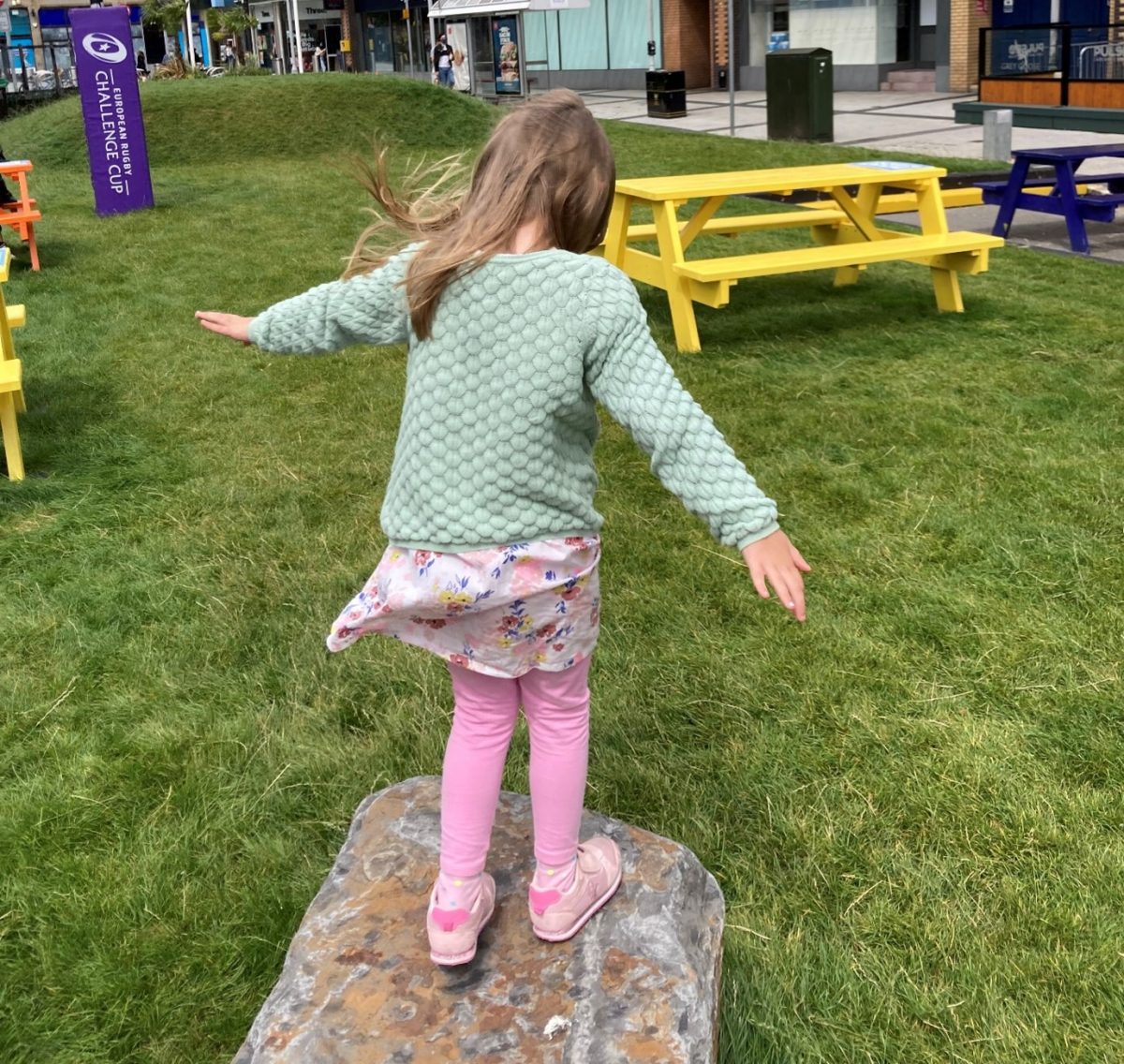
95cm Perspective
We were all 95 cm tall once, typically when we were about three years old. Do you remember what places were like from down there?
It can be easy to forget the perspective of a child from our lofty 5’ to 6’ height, or from the driver’s seat of a car. But children see and experience things differently – the joys, the dangers, the magic of places.
Being a parent or caregiver to a child also changes the perception of a place. Walking times multiply when you have little legs to account for, access to toilet facilities becomes all the more important with nappies to change or in the midst of potty training, and ‘stay on the pavement’ becomes a highway safety mantra but only works if there is a clearly defined pavement and there aren’t cars on it. Navigating and enjoying the city changes in the presence of children but their perspective is often overlooked in the planning and design of our town and city centres.
It is from this perspective that Urban 95 Academy want city makers to view the city. The Bernard van Leer Foundation and the London School of Economics and Political Science had developed a ‘leadership programme designed for municipal leaders across the world to learn and develop strategies to make cities better for babies, toddlers and their caregivers’[1]. The programme offers a fantastic opportunity for city makers to learn from international experience and draw upon it as they devise strategies for their own city. More information can be found on the Urban 95 Academy website.
As highlighted by Play Wales, all children have the right to play, a right in fact enshrined in the United Nations Convention on the Rights of the Child[2]. Article 31 of the Convention says:
Every child has the right to rest and leisure, to engage in play and recreational activities appropriate to the age of the child and to participate freely in cultural life and the arts.
This includes not just young children but also older children and teenagers who often get actively designed out of spaces rather than being welcomed and accommodated. It is in this context that the charity Make Space for Girls was established to ‘campaign for parks and public spaces to be designed for girls and young women, not just boys and young men’[3]. Their research found that in many cases not only were teenage girls not well catered for in the design of public spaces, but they could also feel actively excluded by the design. They highlight the need to understand the context of any particular public space and to speak to girls in the area to develop creative solutions as there is no ‘off the shelf’ fix. Their website does, however, provide some examples of ideas that work of have been tried elsewhere.
Whether it be a new development, a town centre strategy or investment in existing public spaces, what is often sadly lacking is sufficient thinking from the perspective of the full range of people who will be inhabiting these spaces. Research, talking to and involving those people who may be future users of the space should be a standard part of the approach to planning for investment in the public realm, as well as on going monitoring and investment.
Many people with many needs can be overlooked when places are designed for a hypothetical average standard model. People are not standard, and the lens of a child is a helpful one as planning and designing for children will often result in places that are more accessible and more equitable for everyone.
By Jen Heal
Footnotes:
[1] https://www.urban95academy.org/home
[2] https://www.playwales.org.uk/eng/rightoplay
[3] http://makespaceforgirls.co.uk/

